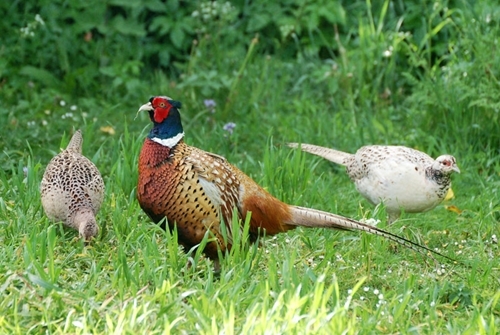
Defra have published their long awaited General Licence for gamebird releasing on European Protected Sites.
Releasing pheasants and red-legged partridges in the protected sites and within a 500m buffer around them will be licensed for an interim period of four years whilst Defra and NE undertake work to assess impacts of gamebird management on individual sites. During that time, release in these areas will only be possible under licence and conditions will apply to limit release densities below the threshold at which there is any possible risk of damage.
To find out if your shoot is in or near a European Site there is a simple guide here.
For pheasants, the licence conditions stipulate that the density of pheasants released within a European site must be no more than 700 birds per hectare of release pen, or lower if required by a site of special scientific interest (SSSI) consent.
For partridges, the density of red-legged partridges released within a European site must be no more than 700 birds per hectare of land they inhabit, or lower if required by a SSSI consent. You must site red-legged partridge release pens in cover crops on arable land or on improved grassland within European sites.
Within a 500m buffer surrounding European sites, the density of pheasants released within the 500m buffer zone must be no more than 1,000 birds per hectare of release pen. For red-legged partridges, the density released within the 500m buffer zone must be no more than 1,000 birds per hectare of land they inhabit.
All shoot managers releasing gamebirds on European sites and in the surrounding buffer will need to provide Defra and NE with details on the total number and species of gamebird released within a European site and the buffer along with location. Details of any relevant SSSI consent will also need to be provided. An online reporting form will be available from 31st May 2021. For shoots that cannot work within the conditions of the General Licence, an Individual Licensing regime, administered by Natural England will be available for shoots to apply to operate outside the conditions of the GL.
Dr Roger Draycott, Director of Advisory at GWCT commented ‘We have previously questioned the scientific rationale and need for a buffer extending to 500m but we are pleased to see that the key conditions relating to pheasant releasing densities are based on GWCT’s science based sustainable gamebird releasing guidelines and that the other conditions are workable. Defra have clearly carefully considered the feedback from GWCT and other stakeholders during the consultation period earlier this year. We urge all shoots, whether in protected sites or not to follow the GWCT’s sustainable releasing guidelines which, alongside the GWCT’s Principles of sustainable gamebird management helps ensure they deliver a net biodiversity gain. We will be reviewing the licence conditions in more detail and we will provide further updates to shoot managers’.